“A lot of hoop houses around here are being redone to grow herb,” a farmer’s market vendor told us a few weeks ago as we were exchanging money for produce. Wow, my husband and I thought, people are really into basil, parsley, and cilantro. Was there a trend I was missing? I had a bunch of herbs growing in our garden at home but didn’t sense that something new was happening.
Turns out the vendor was talking about marijuana, the new legal cash crop in California. There’s a lot of transition happening in the Salinas Valley to cultivating cannabis, according to this New York Times article. My husband and I chuckled at how out of it we were that morning. Duh.
Due to this year’s weather and our removal of a ginormous tree in our yard, I’m able to plant a lot more edibles. Our winter was wet, warmish and at times coldish. Some of my Asian herbs hung on while others seeded themselves. They’ve been growing into voluptuous plants since spring. We’re overwhelmed with herbs and excited about what else is coming up via the seeds and starters that I planted.
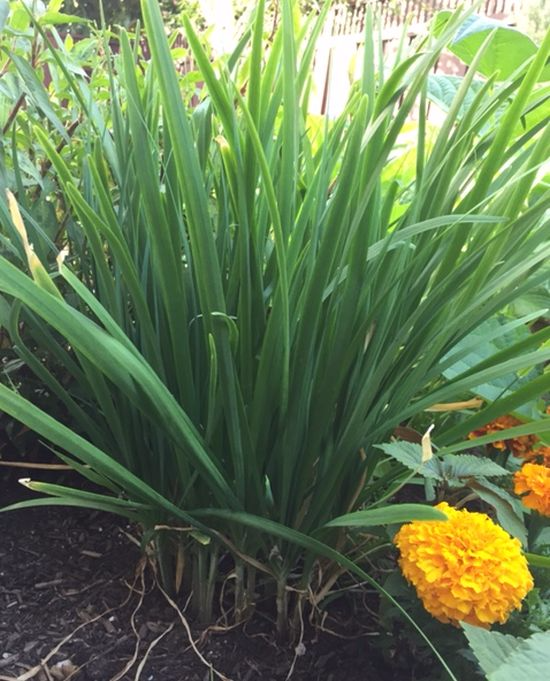
I’ve also clipped Viet herbs like kinh gio and rau ram and rooted the sprigs in water for a week or so. Then I replanted them in the bed. Some survived and thrived while others pooped out. (If you’re unfamiliar with the plants I just mentioned, check out the Viet herb primer.)
Raised Garden Beds Tips
To take advantage of the prime growing conditions, I added galvanized metal raised beds. They’re supposed to produce higher crop yield because they keep the soil warmer longer throughout the day. I found these online at Metal Garden Beds and they’re well-priced and easy to put together.
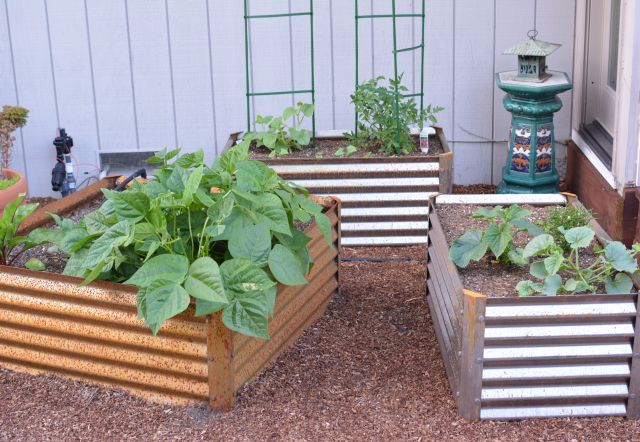
The ones I got were treated so they’ll age and darken over time. The product is called corten steel and I noticed that the Metal Garden Beds people no longer offer them. The regular galvanized metal beds work the same for just a different look. These are lightweight, which means you can easily place them at different angles before you commit to filling them with soil.
We have weed blocker in all growing areas of the yard but to protect things from gophers (there must be an entire urban network of them in Santa Cruz), I lined each planter box bottom with 19-gauge, ½-inch galvanized hardware cloth. Gardening staples placed about 12 inches apart kept the hardware cloth in place. If you have gopher wire, that will work too. Hardware cloth comes in smallish quantities so it costs less. The lower the gauge the tougher it is so gophers can’t chew through the metal so easily.
I disregard a lot of rules about not overcrowding plants, which explains why I grow mint with a tomato plant. My approach is about height. Similarly, a trellised cucumber and caged tomato can share space with bush beans. I planted a melon near the edge of another planter box so the fruit can climb over and down the side (I plan to prop up the fruits later this summer).
For the soil, I combined Gardener and Bloom (G&B) “Raised Bed and Potting Mix” and “Farmyard Blend” compost in a 3:1 proportion. A little Dr. Earth all-purpose fertilizer goes into the mix too.
How to Use an Herb Bounty
So far so good. Actually, we have a lot of herbs going and have been dispensing them in green salads for punchy flavor. I use as much mint and Thai basil in pho dishes and Viet lettuce wraps. My nightly cup of relaxation/digestif tea is made from steeping lemongrass leaves with lemon balm or mint in hot water for 10 minutes then straining. The plants refresh themselves with bushy growth within days and I can’t keep up with them.
This morning, I decided to harvest a bunch of herbs (Vietnamese coriander, lemon and Vietnamese balm, shiso of two types, Thai basil) plus lemongrass and makrut (Thai) lime leaf. My goal to use a bunch for a Malaysian-style rice and herb salad. I’d made it years ago and revisited it for lunch.
My version of nasi ulam (a.k.a, nasi kerabu) is based on a recipe from Cradle of Flavor by James Oseland. His recipe called for grinding up dried shrimp but today, I decided to use fish sauce instead. It was a fine substitute; you could use Mexican camaron molido, too. For a vegetarian version, I suppose you could employ soy sauce and increase the salt, but the briny umami depth is fabulous. The coconut lends a little richness to this lo-cal, gluten-free dish. 😉
For the rice, I cooked a batch of quick brown jasmine rice. If you have leftover rice in the fridge, refresh it in the microwave oven and let it cool to room temperature so the herbs don’t get cooked. Aim to use ½ packed cup of prepped herbs for this dish to sing. If you don’t have makrut lime leaf, grate the lime zest from the lime that you’ll juice to dress the salad.
If you have The Banh Mi Handbook, make the Sri Lankan black curry chicken (page 63) to pair with this. Malaysian-born chef Alex Ong gave me that recipe and pinged me on Facebook to say that it would be a great pairing! I totally agree.
Malaysian Herb and Rice Salad
Yield 2-4 servings
This salad tastes good up to 3 hours after you’ve combined all the ingredients so it’s a nice party or potluck dish. You can easily double, triple, or quadruple the recipe.
Ingredients
- 3 tablespoons unsweetened finely shredded dried coconut
- ⅓ cup gently packed lemon basil, Thai basil, purple perilla (tia to), Vietnamese balm (kinh gioi), or Italian basil, cut into fine matchsticks (3 tablespoons packed)
- ⅓ cup gently packed Vietnamese coriander (rau ram) or cilantro, cut into fine matchsticks (3 tablespoons packed)
- ¼ cup gently packed mint leaves, cut into fine matchsticks (2 tablespoons packed)
- 2 makrut (Thai) lime leaves, minced (omit center ribs)
- 1 medium stalk lemongrass, trimmed and very thinly sliced
- ¼ cup thinly sliced shallot or red onion, rinsed, and patted dry with paper towel
- About ⅛ teaspoon fine sea salt
- About ¼ teaspoon black pepper, freshly ground preferred 3 cups cooked long-grain rice, at room temperature (if needed, see “How to Cook Perfect Rice”)
- About 1 ½ teaspoons fish sauce, 1 tablespoon ground dried shrimp, or 2 tablespoons small dried shrimp, coarsely chopped and ground to a sawdust texture
- About 1 tablespoon fresh lime juice
Instructions
- In a small skillet or saucepan over medium heat, toast the coconut until fragrant and caramel colored, 4 to 5 minutes. Stir frequently to ensure even cooking. Remove from the heat and cool. Cover if you will let it sit for several hours, or its perfume diminishes.
- Prep then put the herbs, lime leaf, lemongrass, and shallot in a mixing bowl. Add the salt and pepper. Use a large spoon to combine well.
- Add the rice and about 2 tablespoons of the coconut. Toss to combine, then add the fish sauce (or dried shrimp) and lime juice. Toss, wait 5 minutes, then taste. You may need extra salt, pepper, or lime juice. Aim for a balance of all the flavors. The herbs are subtle yet their pungent fragrant selves should shine too. Transfer to a shallow dish or serving bowl, garnish with the reserved coconut.
Notes
Recipe adapted from James Oseland's Cradle of Flavor (Norton, 2006).
Courses side dish
Cuisine Malaysian
Pho and Fall Cooking Classes!
This week, the National Post (a major newspaper in Canada) spotlights Pho as it's "Cookbook of the Week"! I'm totally honored. Laura Brehaut's interview of me and recipes are here.
If you're a fan of KCRW's award-winning "Good Food" hosted by the fabulous Evan Kleiman, I'm on her show this week! Tune in or catch the podcast later on.
People have been asking about cooking classes. In a couple of days, registration will open for two classes in September and October. Check the sidebar and classes link for details. Hope to cook with you in Santa Cruz!













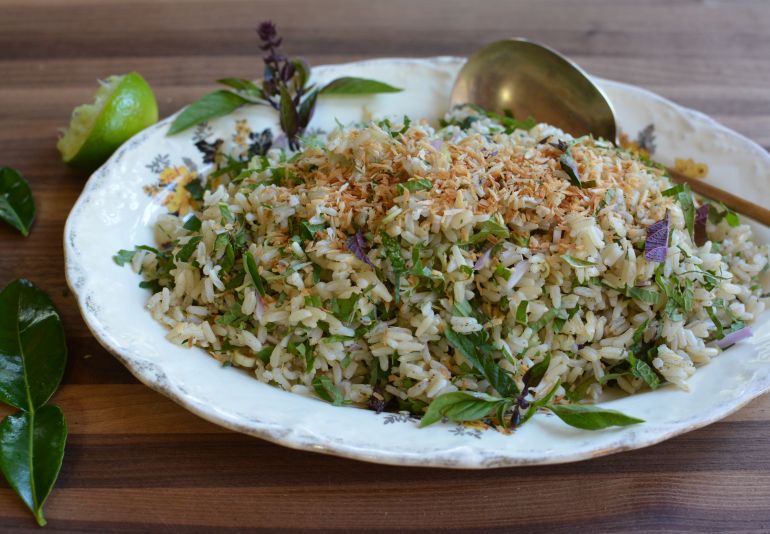
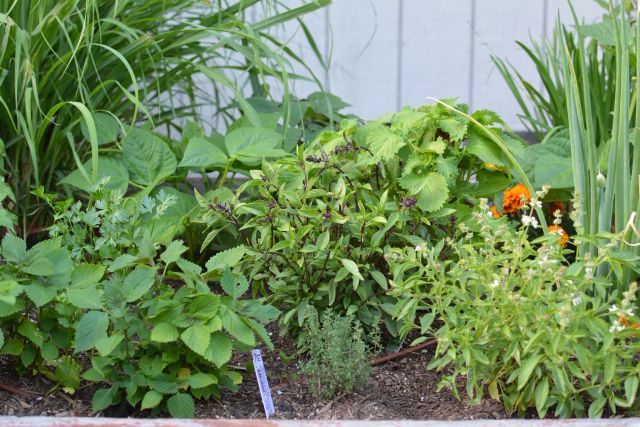
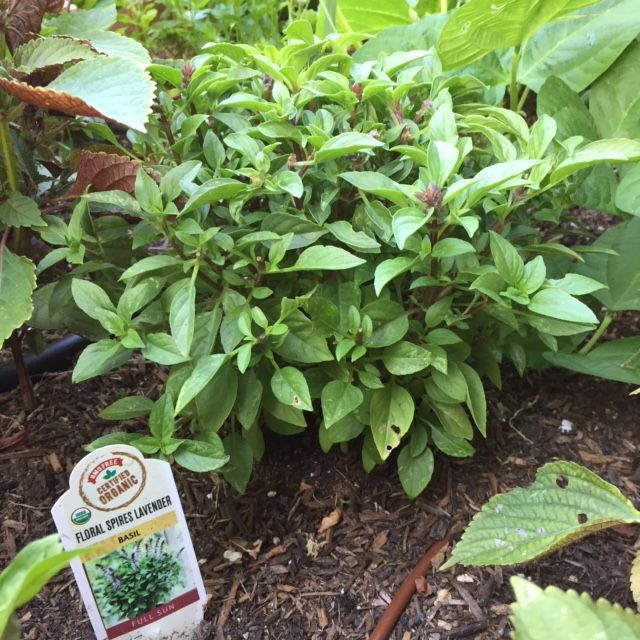
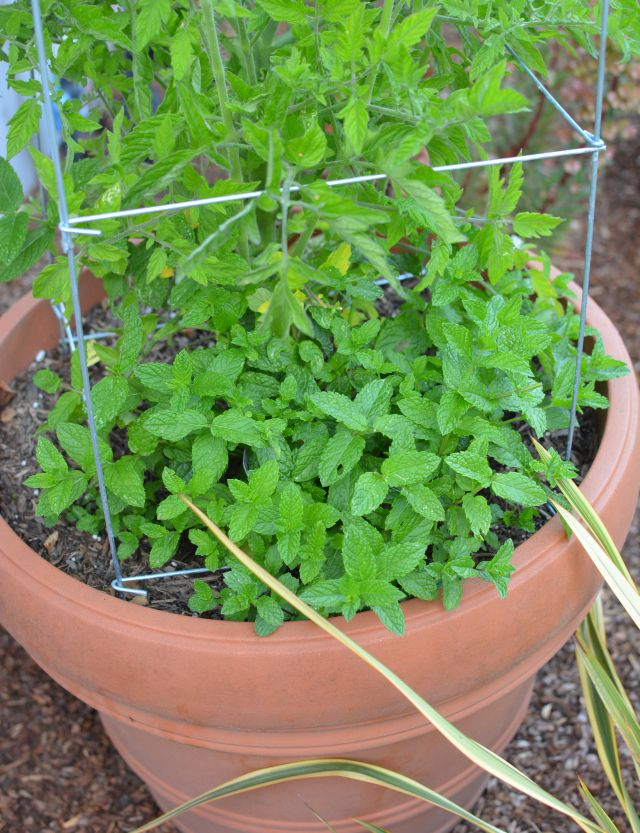
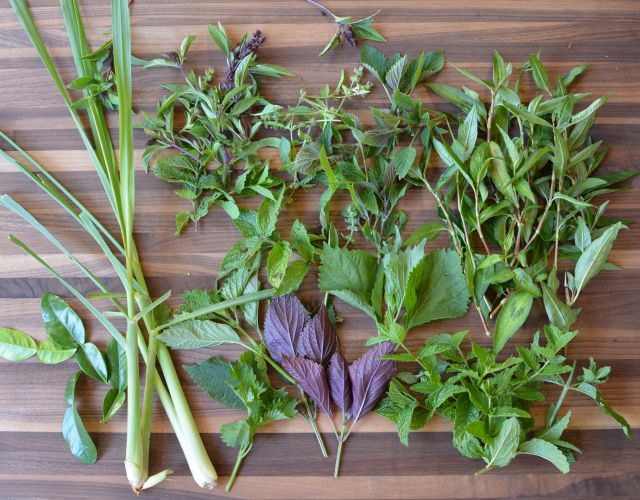
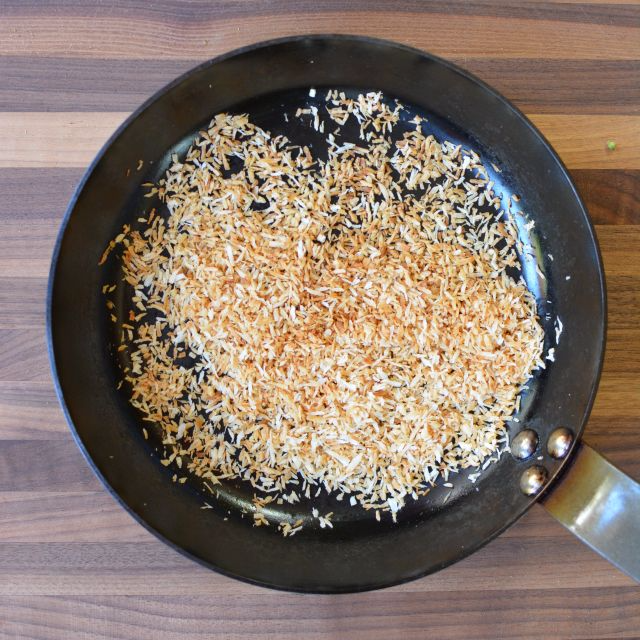
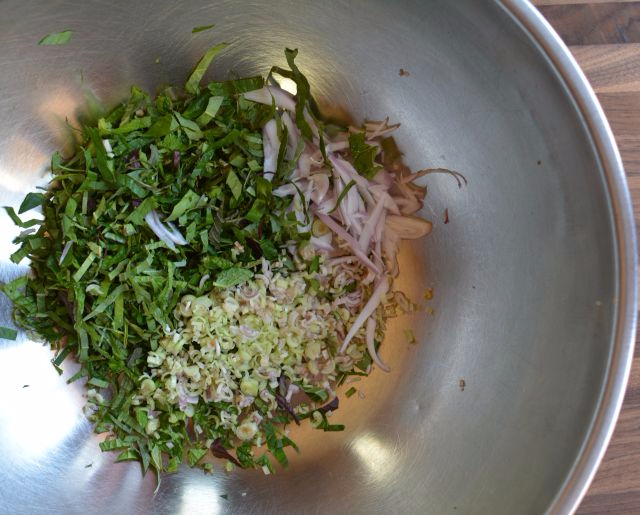
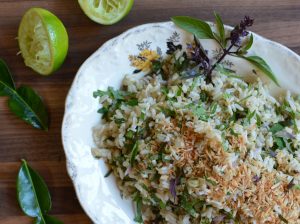
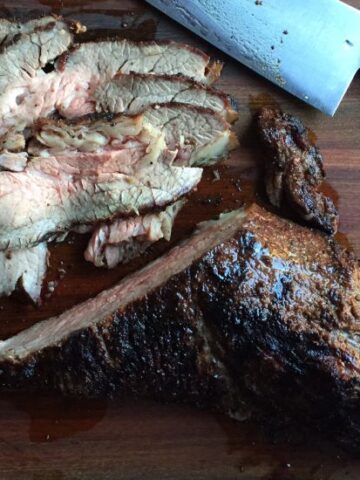
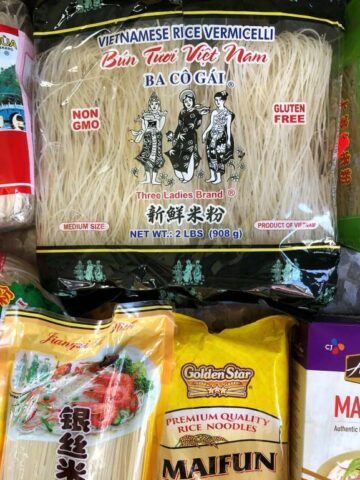

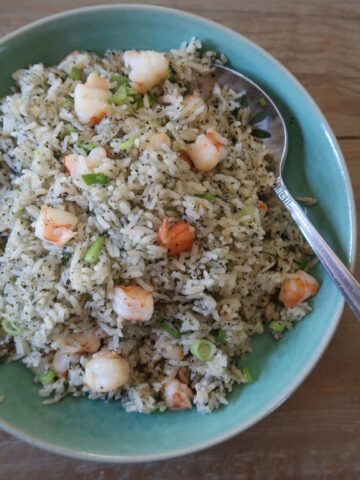
Roseline says
I love the Fresh Herb Rice Salad Recipe.
Karen Campbell says
Can't wait to try this rice salad recipe.
Martin says
Thanks for sharing
Cannabismo says
Hi Andrea! I will keep those Raised Garden Bed Tips in mind, I find the galvanized metal beds worth copying. And hey, I am excited to try Fresh Herb Rice Salad Recipe 🙂
Andrea Nguyen says
I'm sure you'd make a very special rice salad.
Bradley Alvarez says
Thanks for Recipe. I really love Fresh Herb Rice Salad. Thanks for sharing. Please keep it up...